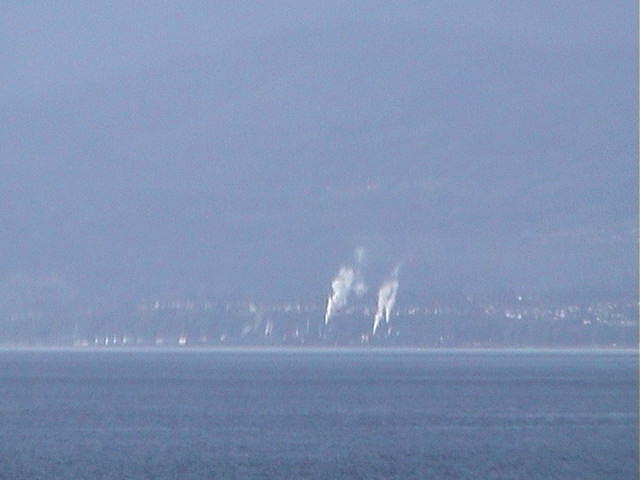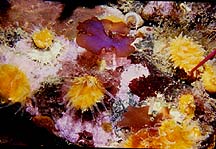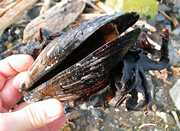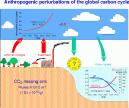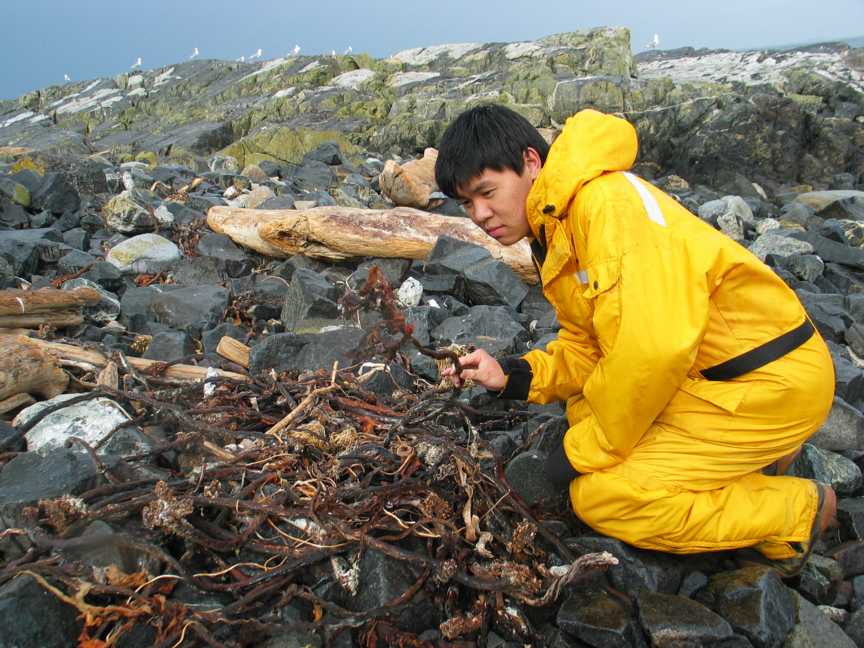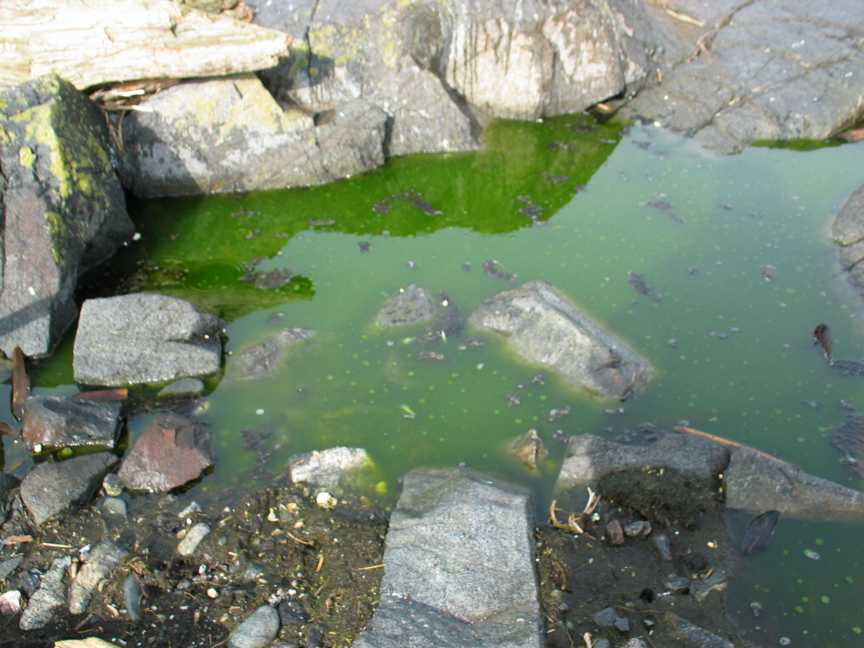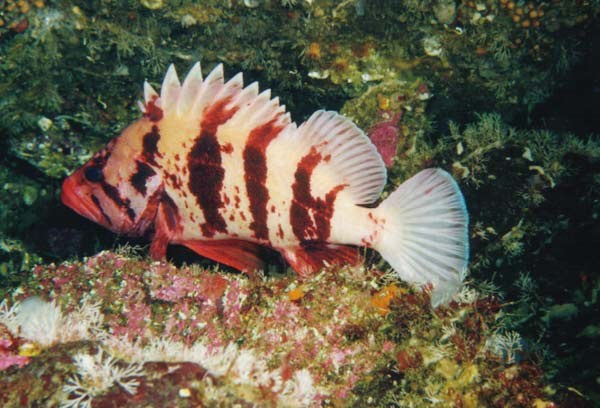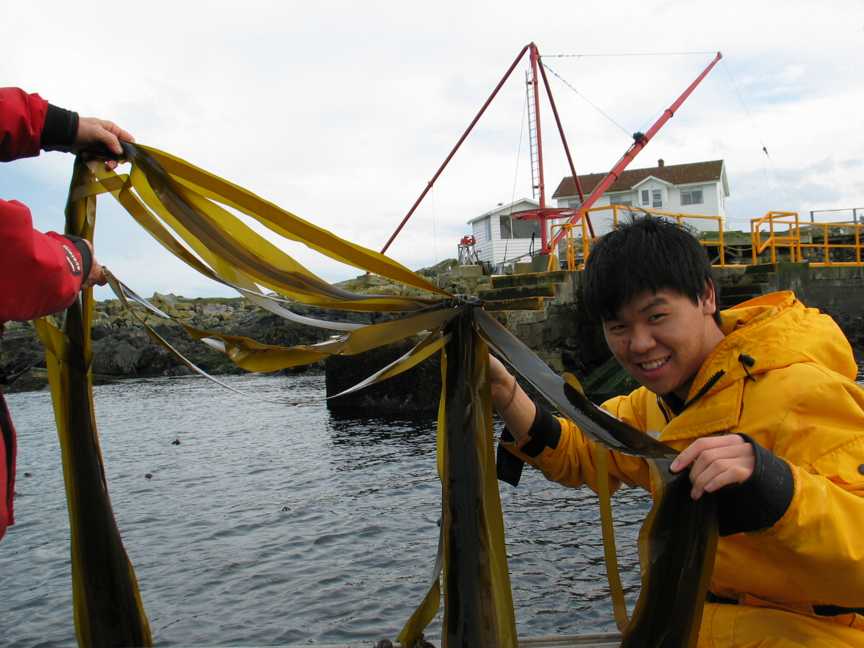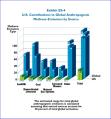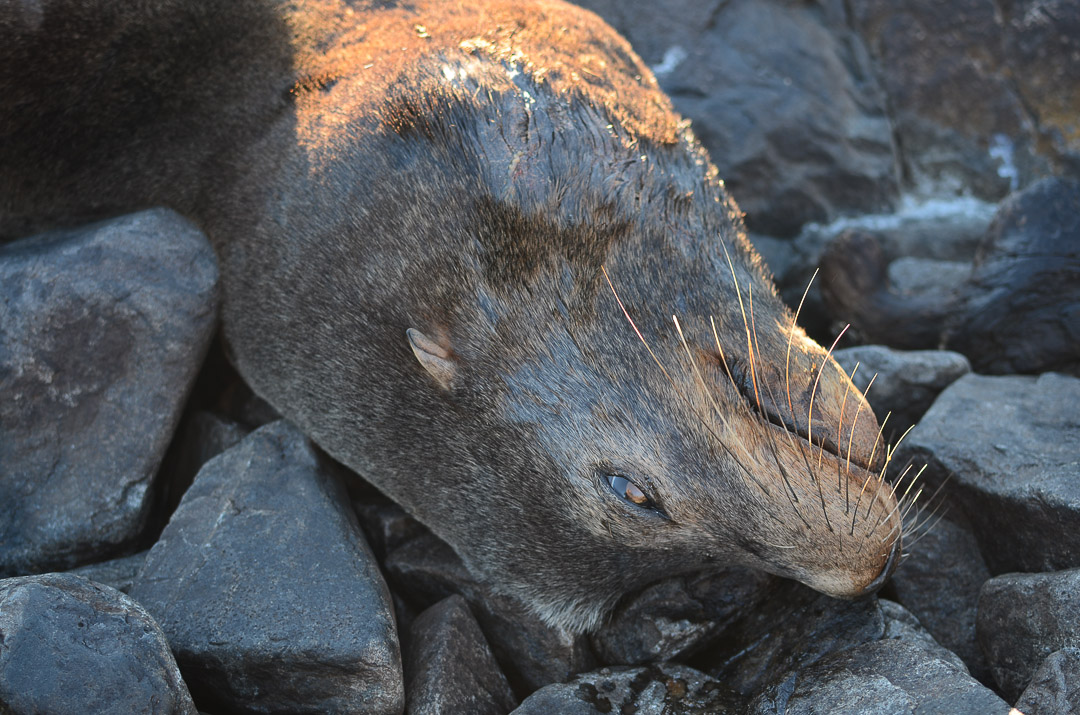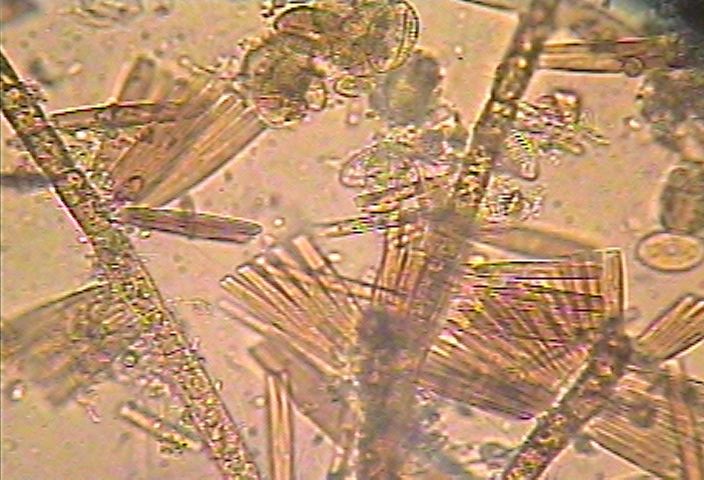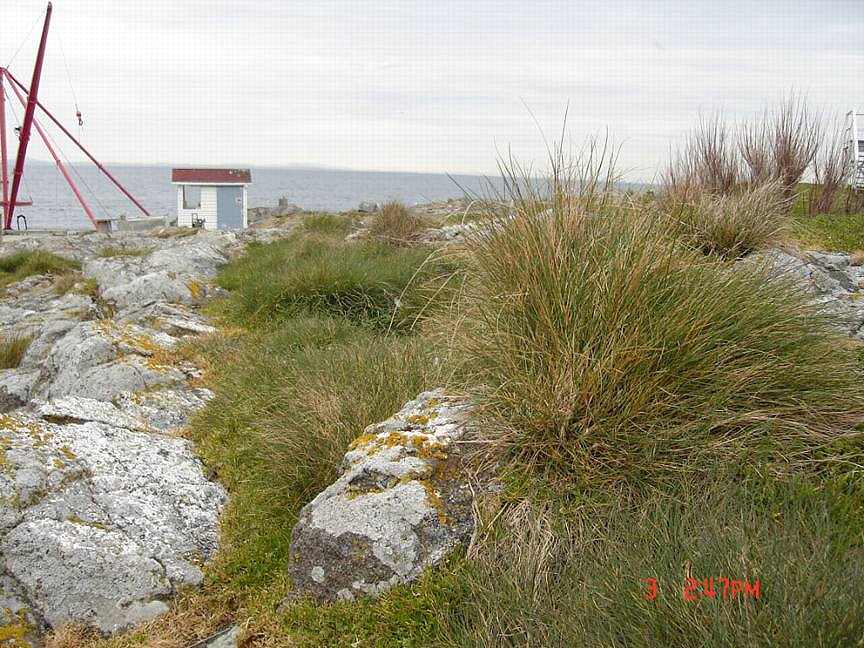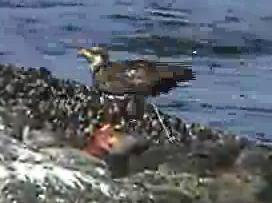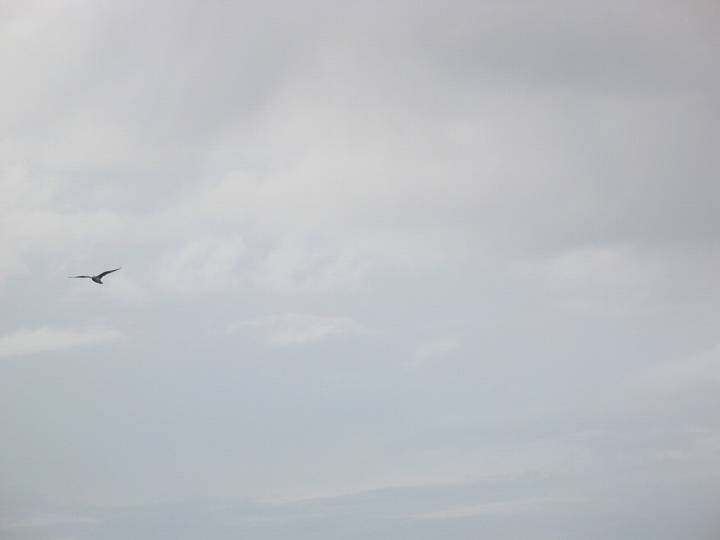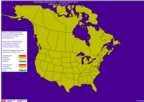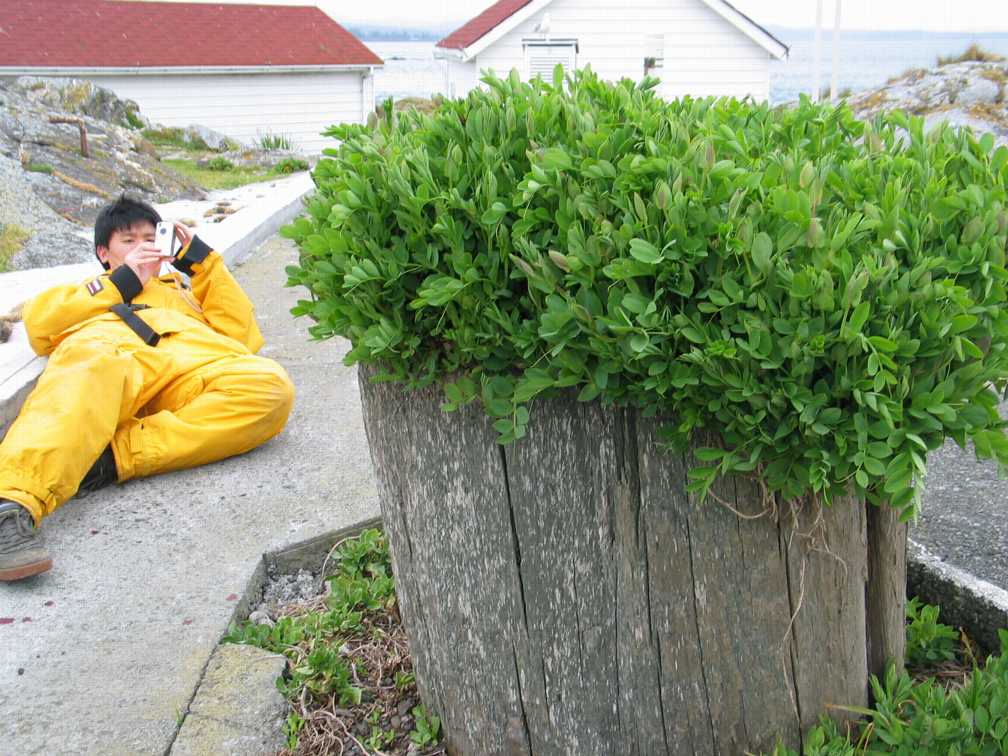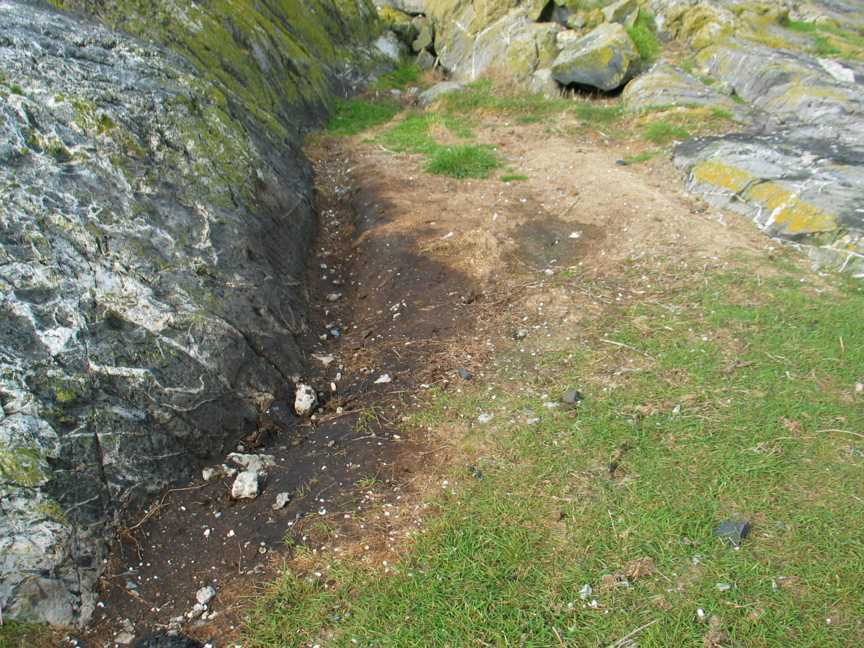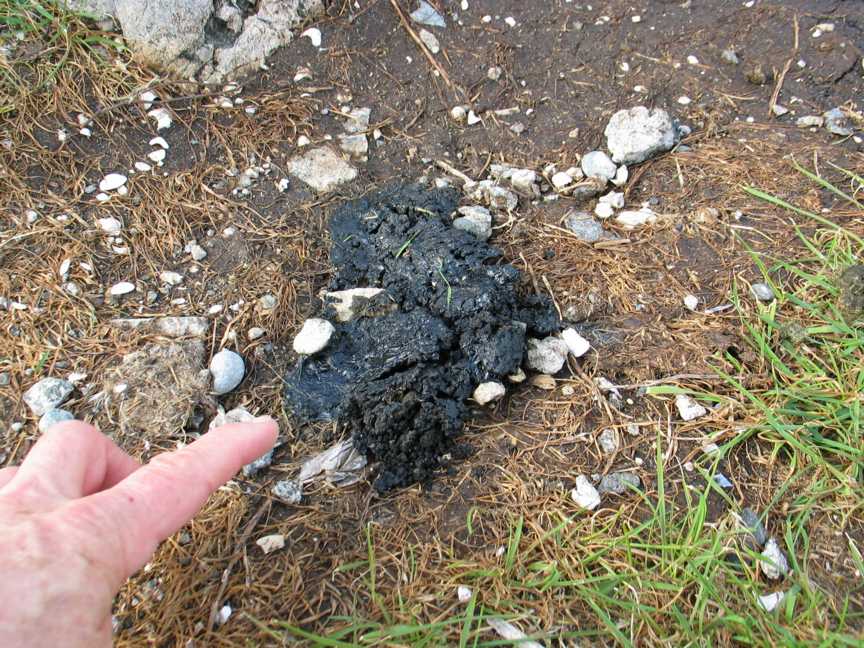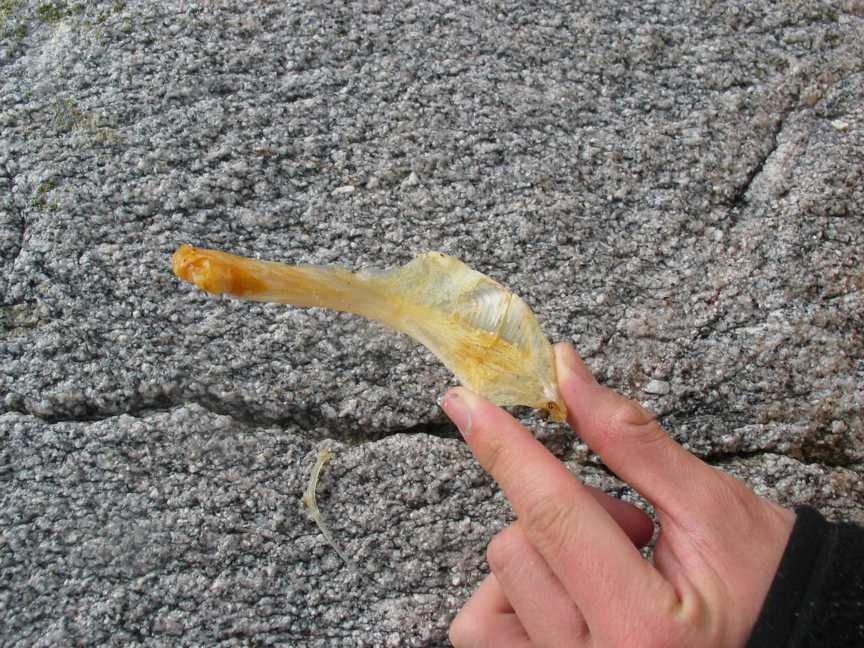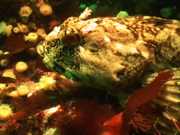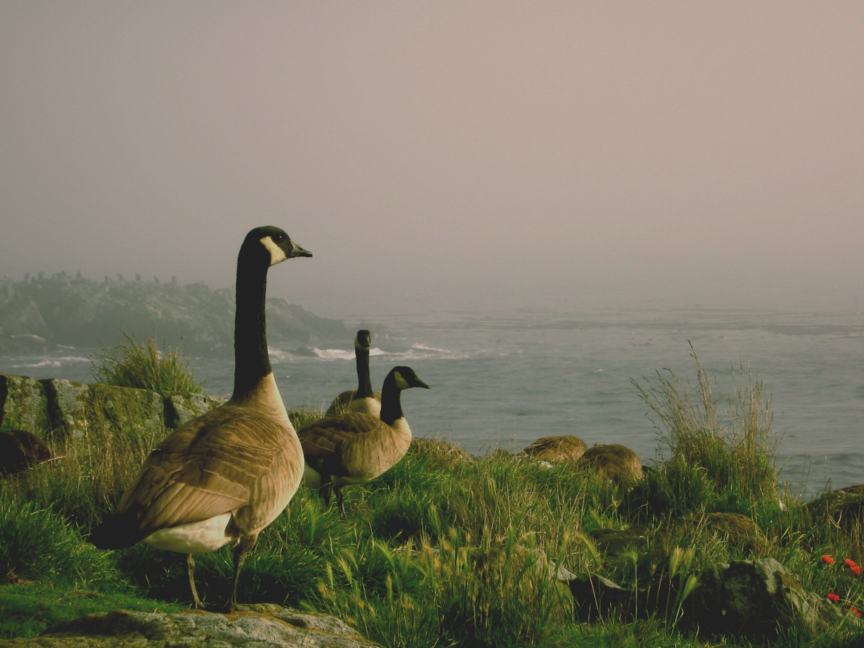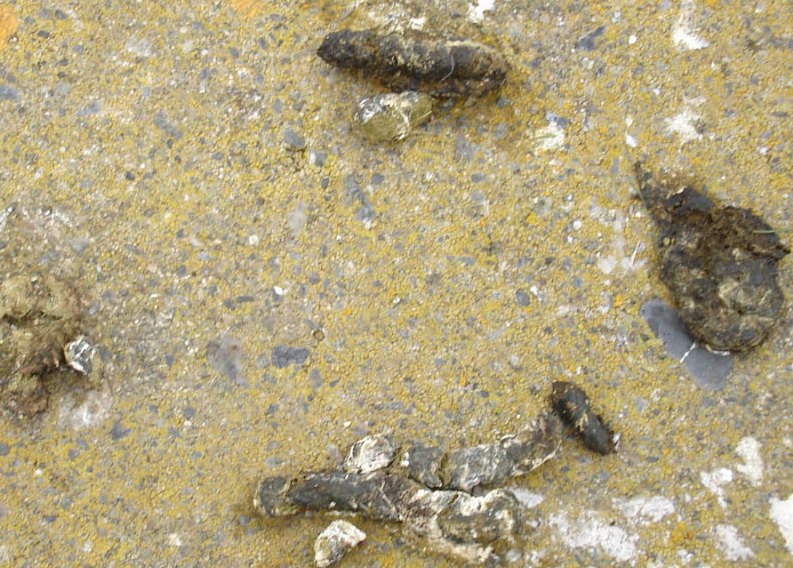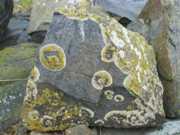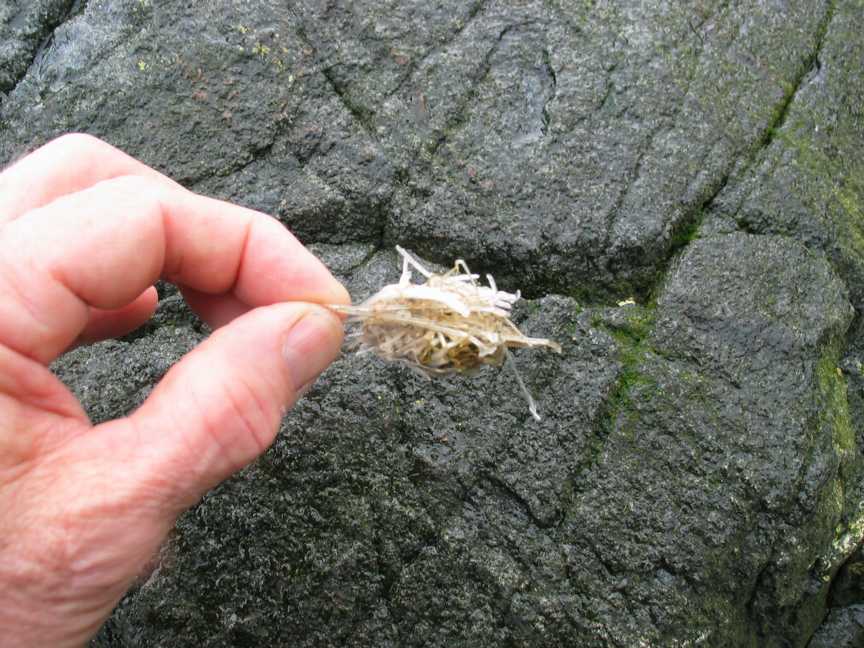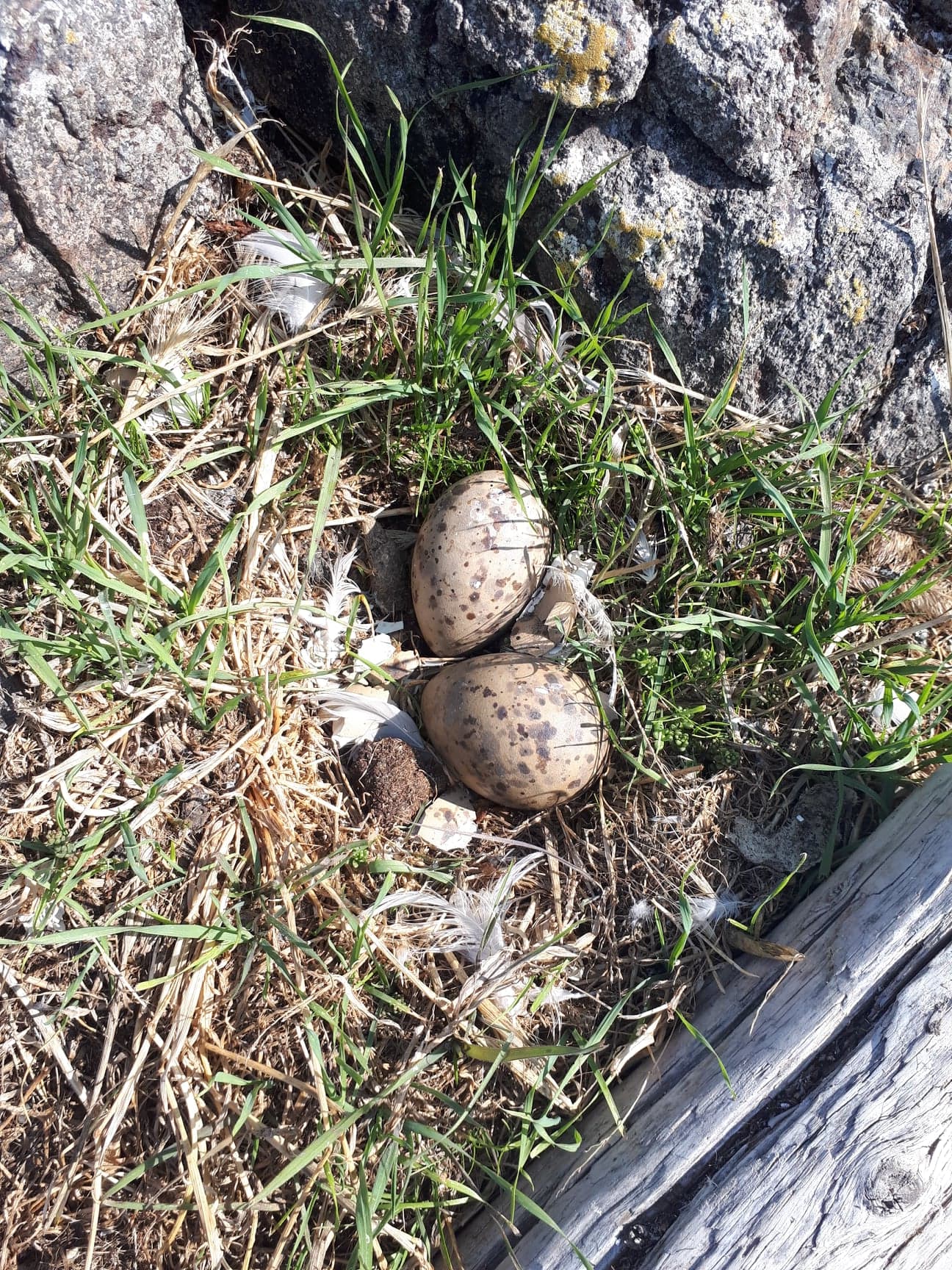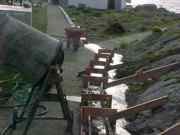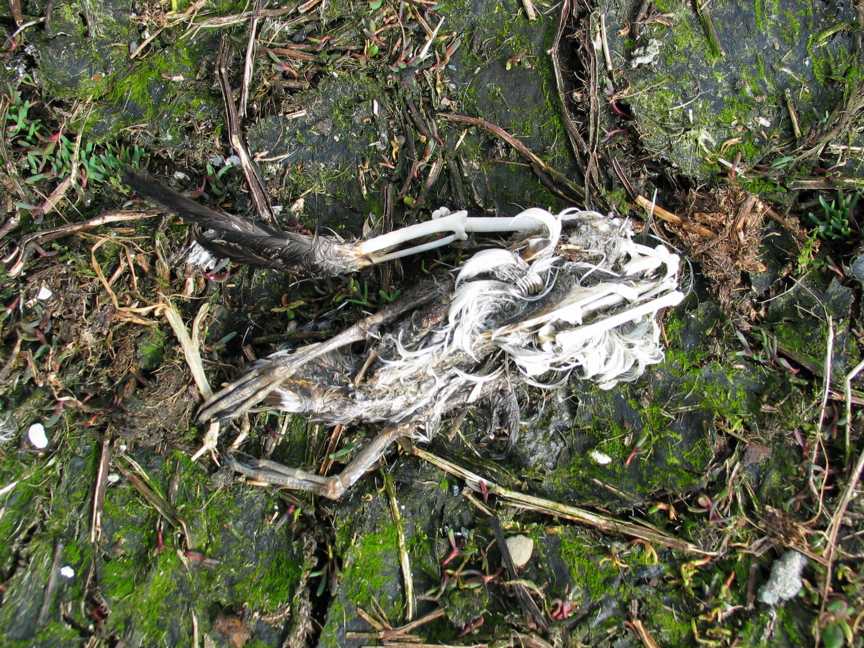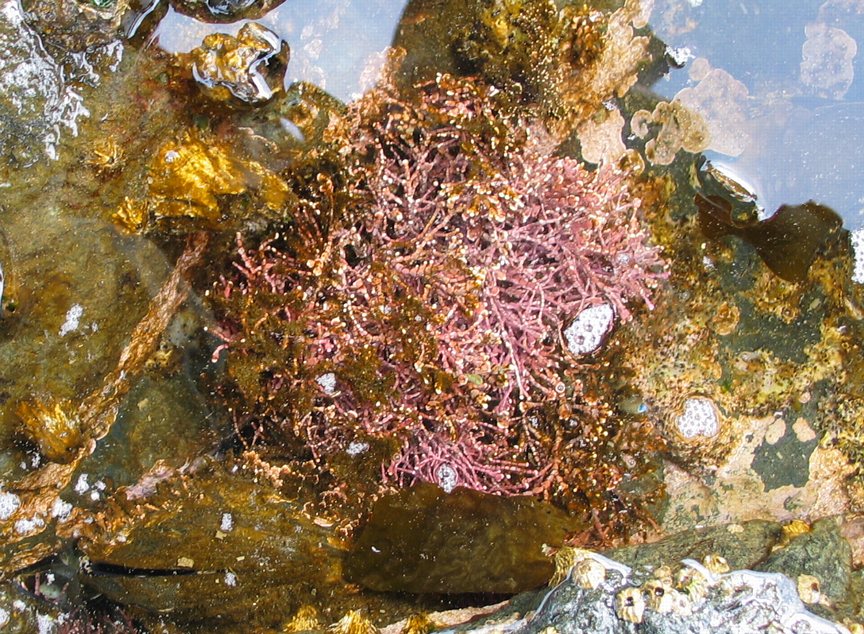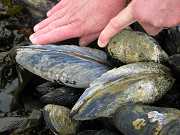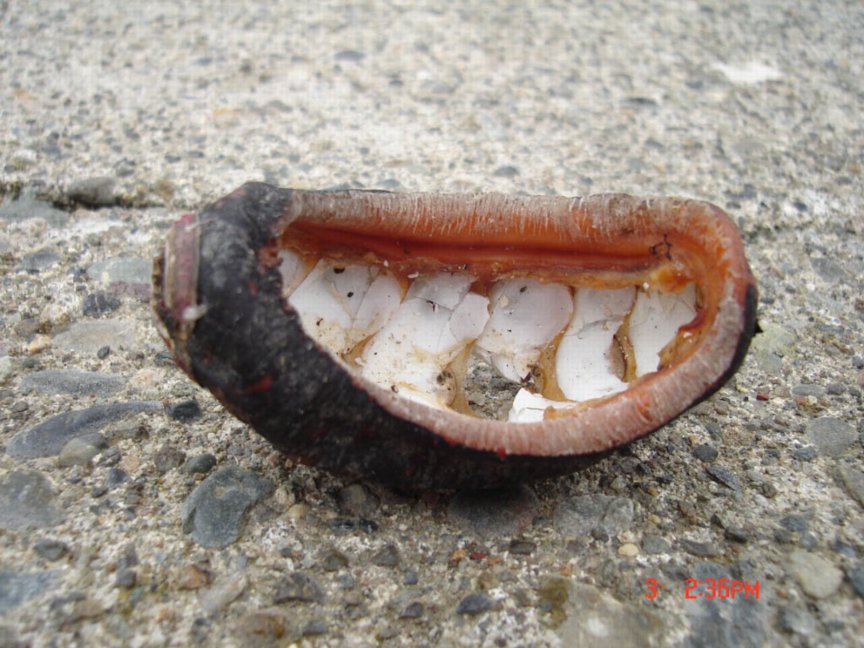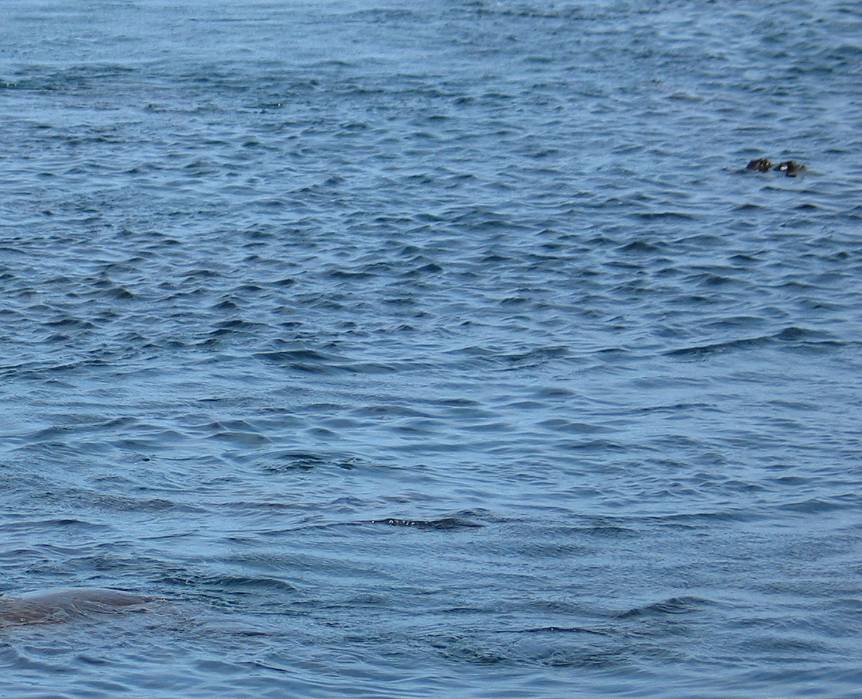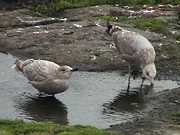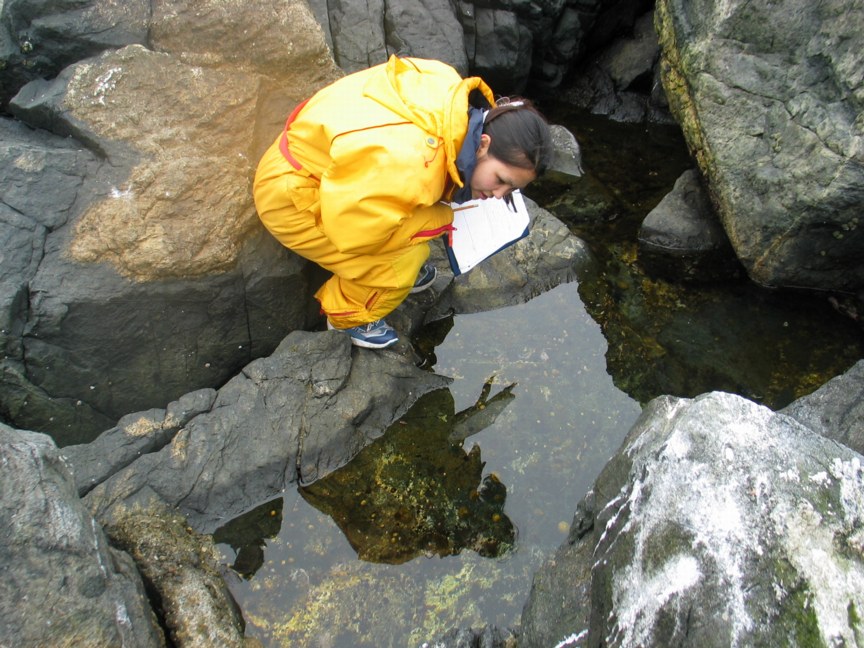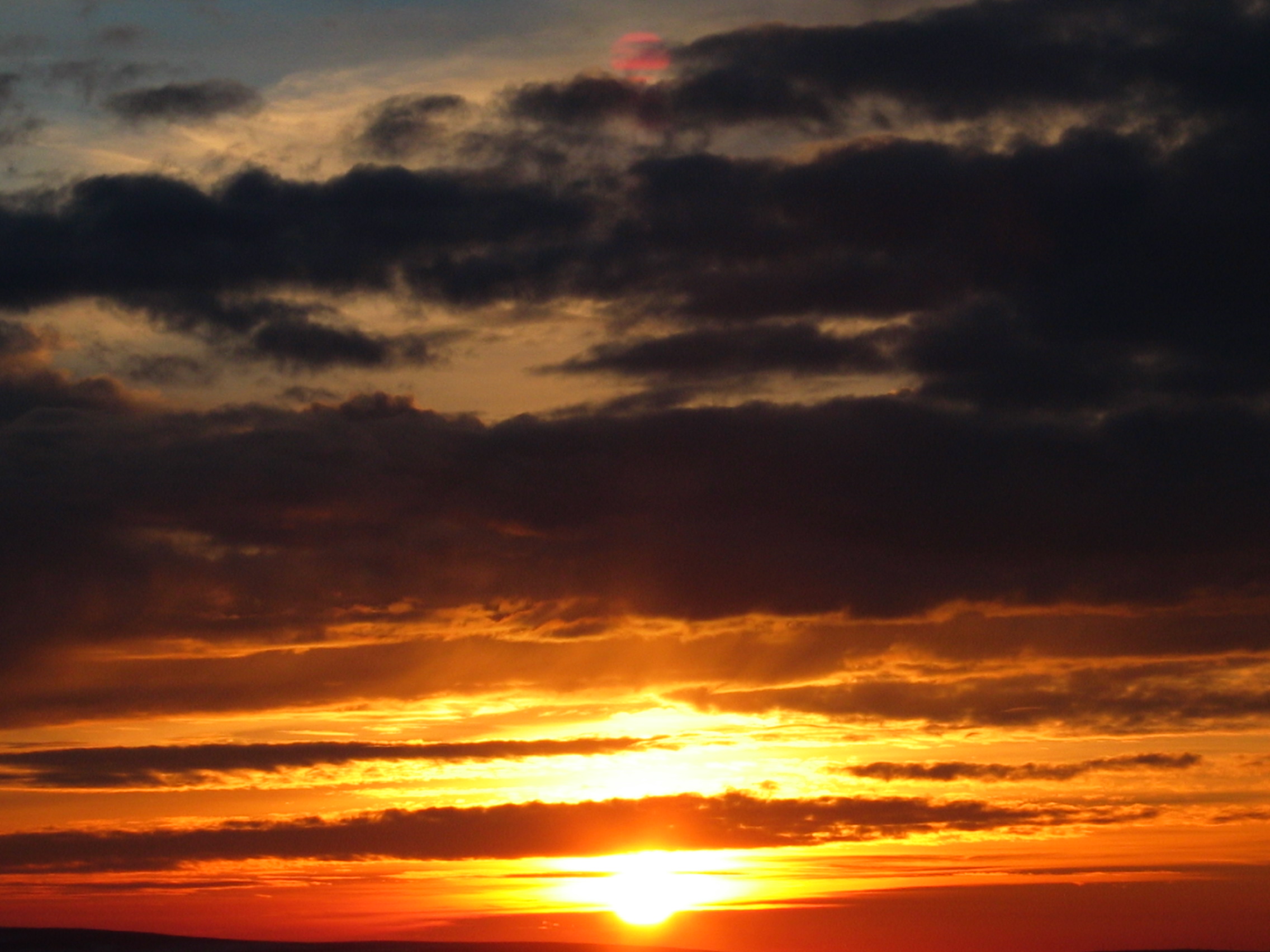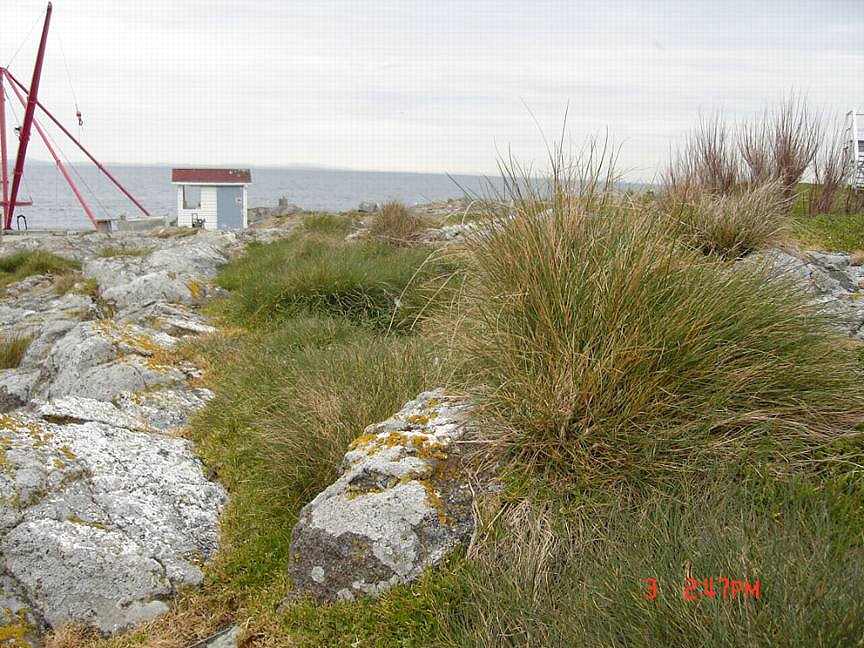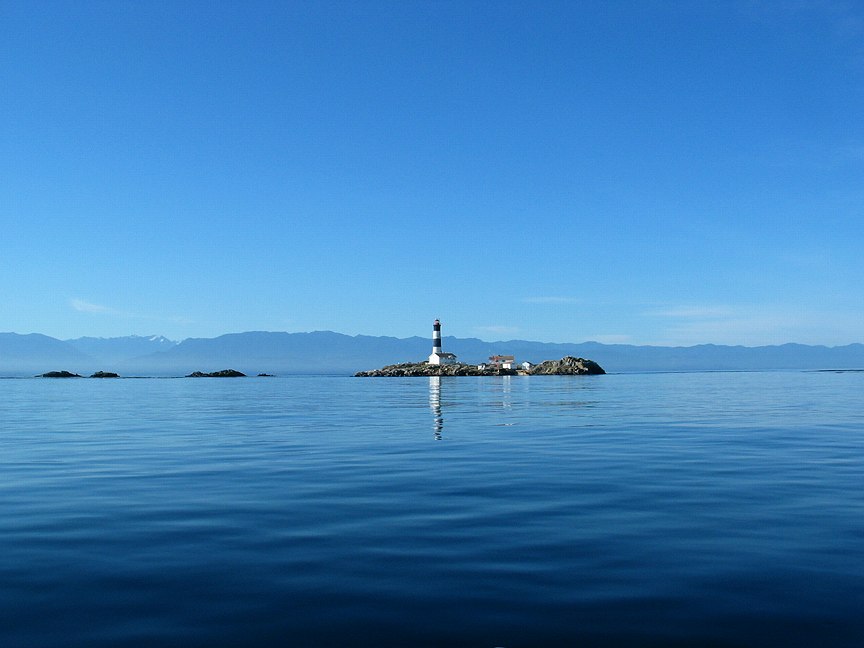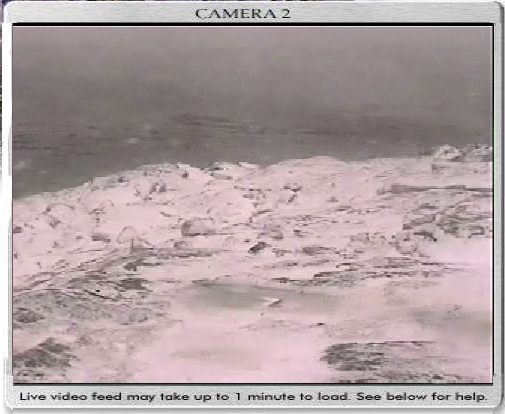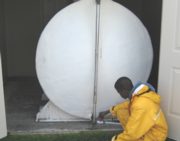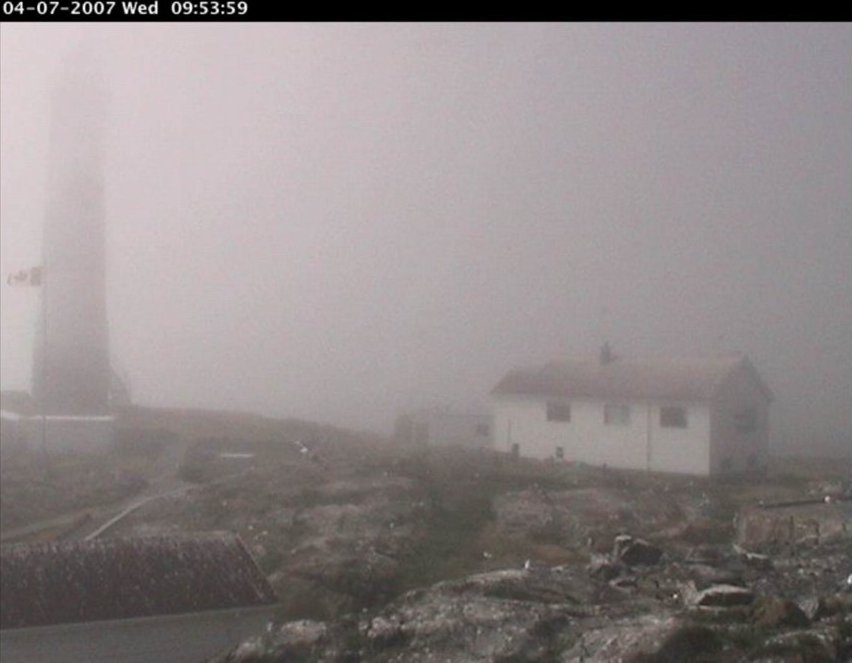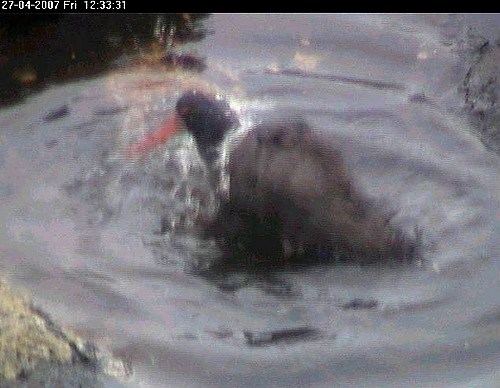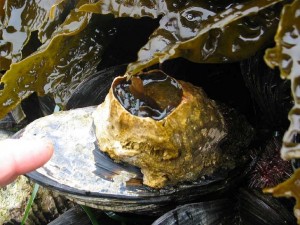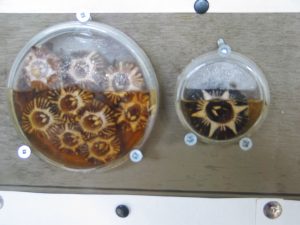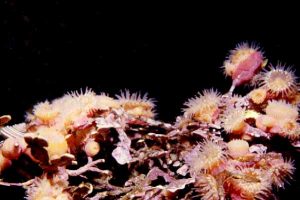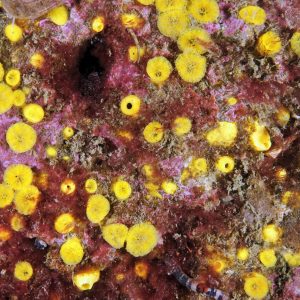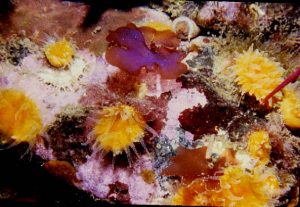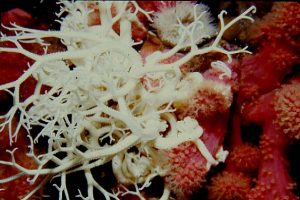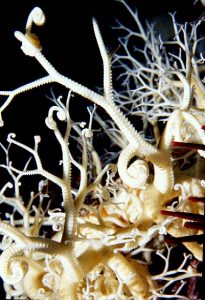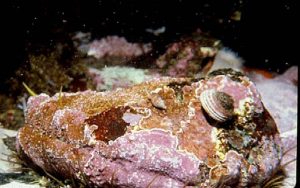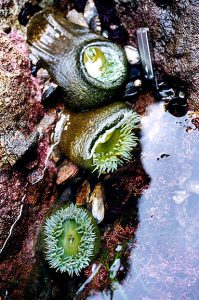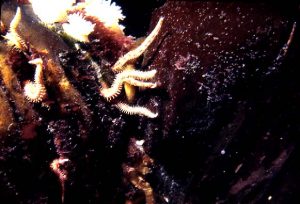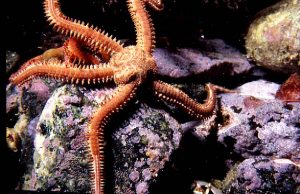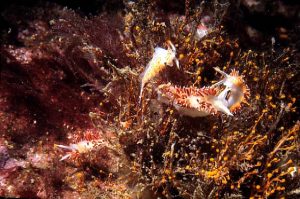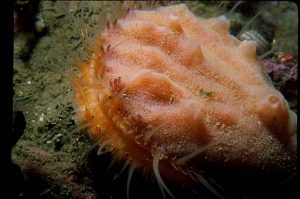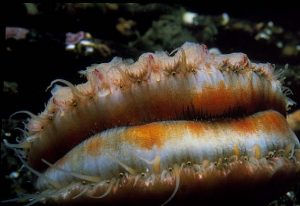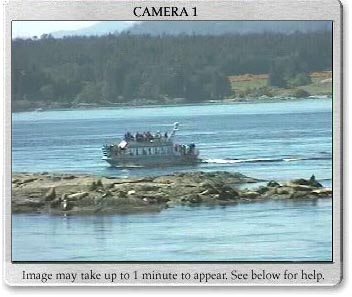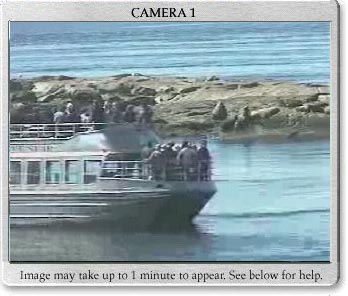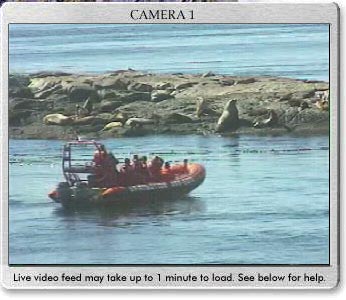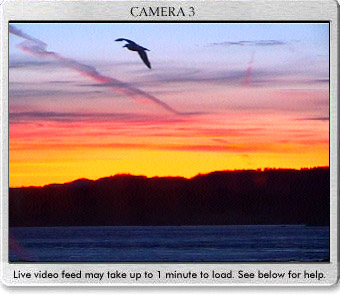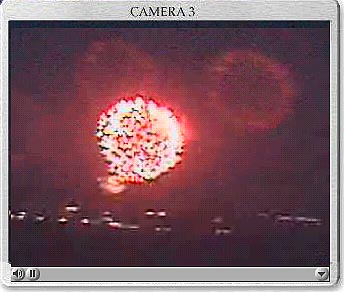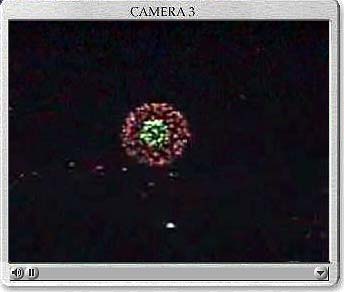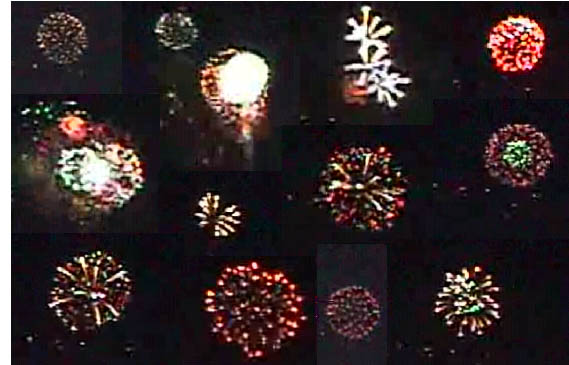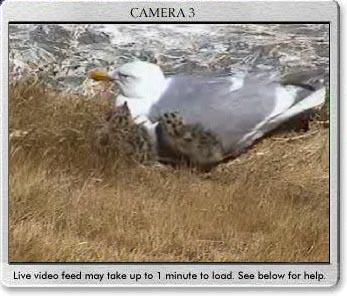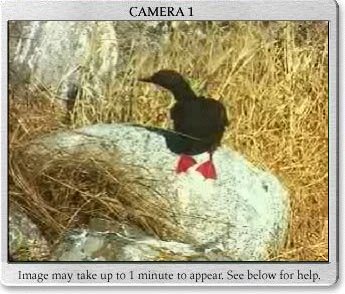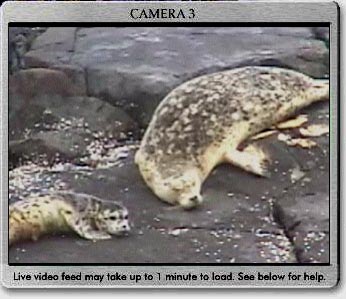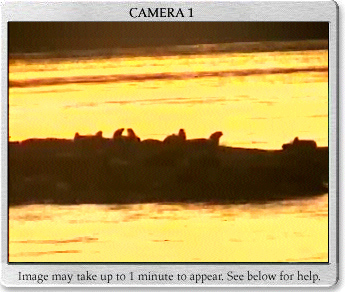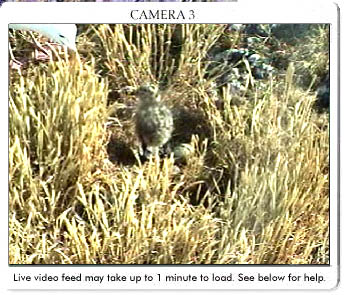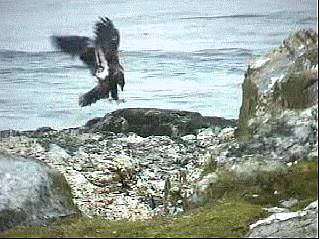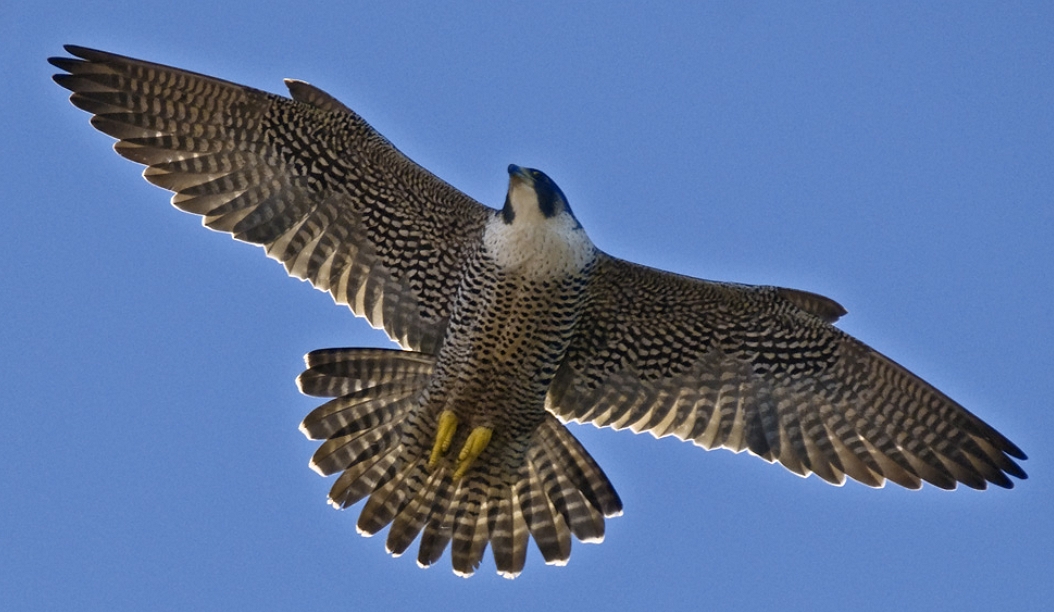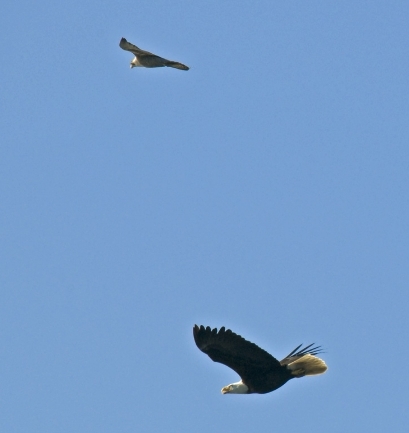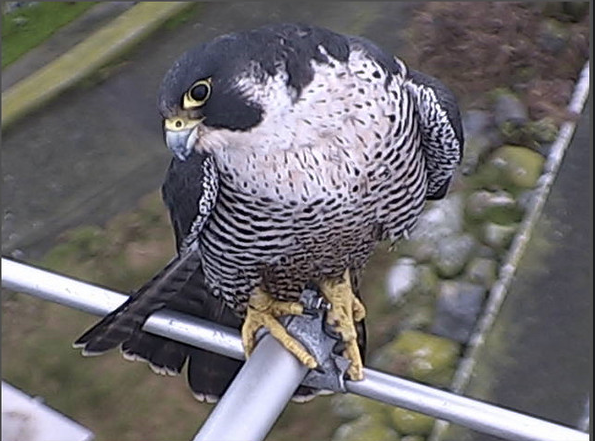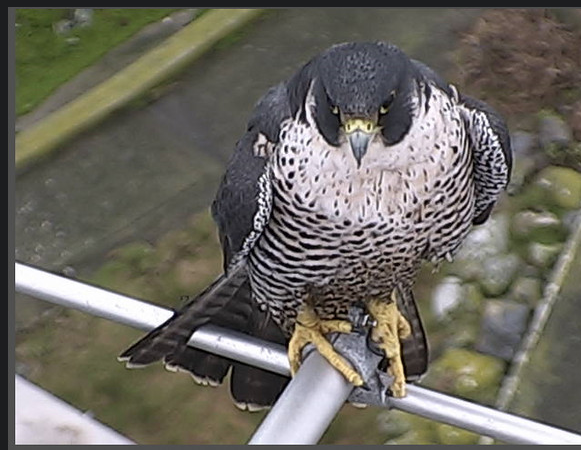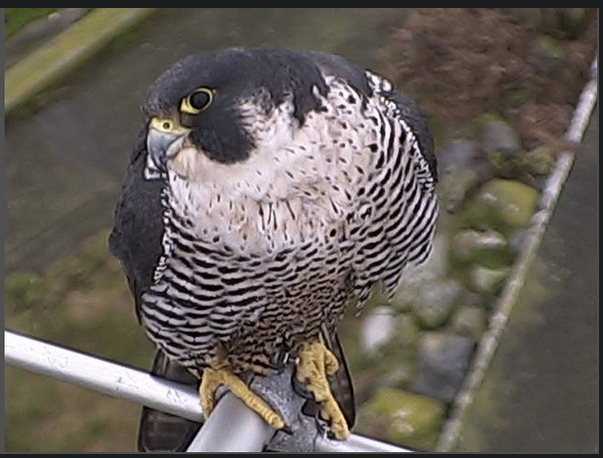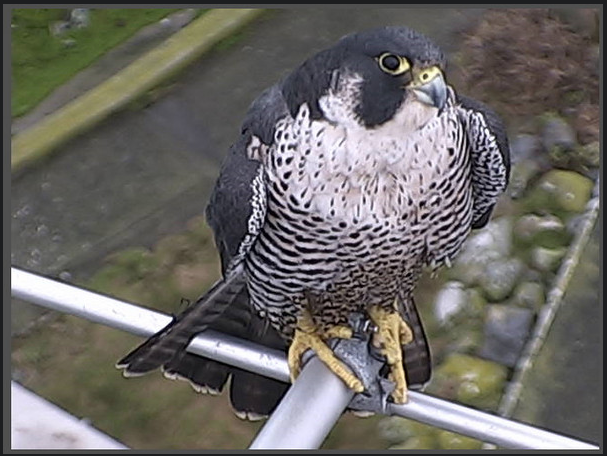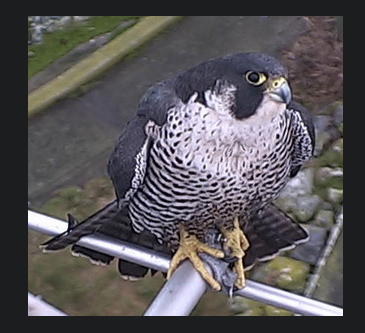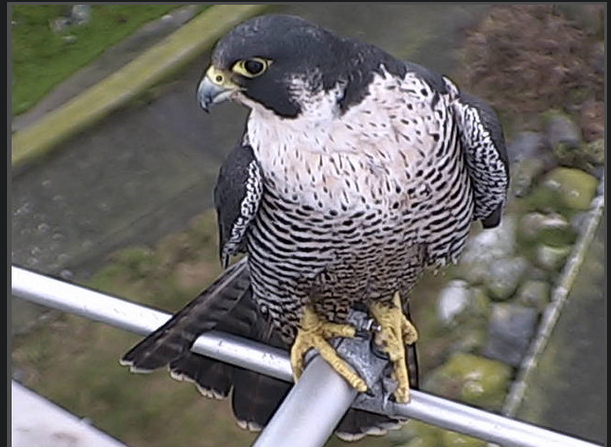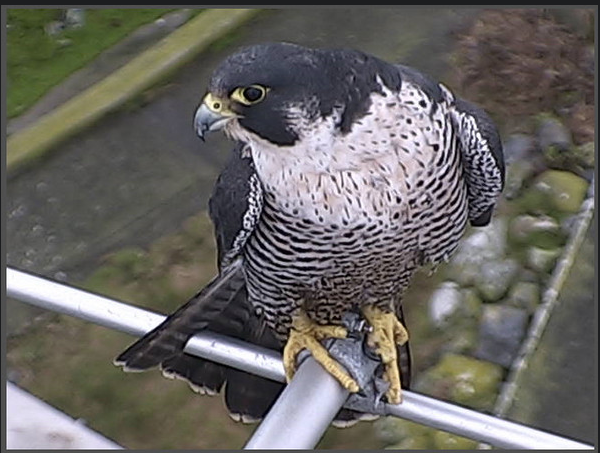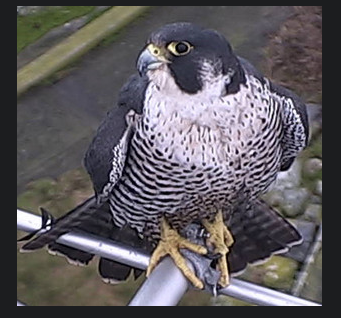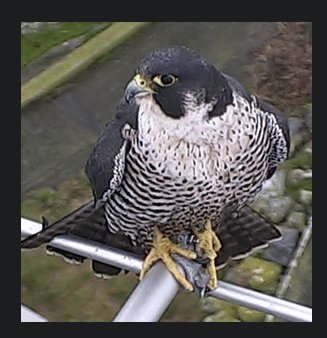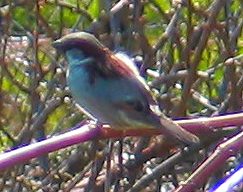The islets may be shrouded in fog for up to 45 days a year. With only the station bell for a keeper to sound in the fog, Race Rocks was for many years the final resting place of the ships of unsuspecting crews drawn to the reefs by the relentless tide rips. Unfortunately, because of the strong currents, most shipwreck evidence has been swept off the rocks into water too deep for regular diving.
he Nanette.. sank in 1860
Three days before the new light was lit, tragedy struck. If there was ever any doubt about the need for the lighthouse structure the loss of the 385 ton tall ship Nanette proved it. Without the warning the new light was to provide only three days later, the Nanette ran hard aground on Race Rocks and was a total loss.
The Nanette’s mate William McCullogh wrote in the ship’s log:
“At 8 o’clock saw a light bearing N by W [this must have been the new light at Fisgard lit only six weeks earlier] Could not find the light marked on the chart. At 8 1/2 o’clock it cleared somewhat, and then saw the point of Race Rocks the first time, but no light. Called all hands on deck, as we found the ship was in a counter current, and drifting at a rate of 7 knots toward the shore. We made all possible sail, but to no avail.”
With the assistance of the construction gang the crew of the Nanette found shelter although the lightstation boat was also lost. HMS Grappler was able to rescue the crew from Race Rocks the next day. The cargo of the Nanette , valued at over $160,000 was strewn across the rocks surrounding the stricken hull. This prize attracted many eager locals hoping to salvage what they could. One overly ambitious crew perished when their over loaded canoe capsized off Albert Head tossing five men, a woman and her 18 month old baby into the sea.
The Loss of the Nanette, 1860
The Mystery wreck.. possibly the Idaho discovered at Race Rocks
The SS Nicholas Biddle ..sank January 5, 1867.Feb 5, 1867
Disaster to the ship Nicholas Biddel- ran aground on Rosedale reefThe Swordfish, sank .. November 6 1877
Nov. 7 1877
Wreck of the HMS Swordfish off Beecher bay
Nov. 7 1877H.M.S.Opal rescues crew of the SwordfishNov.11 1877Sale of the Swordfish ( wreckage) In 1978, PC student Alex Guevarra and faculty member Garry Fletcher while diving on this wreck, discovered a cast iron cannon. The cannon was retrieved after some effort and under the direction of Pearson College Anthropology teacher Brad Myers, was restored over a period of 10 years in a solution with electrolysis. It was transferred to Race Rocks and now sits on a cradle, made by a former light keepers assistant, at the base of the tower. It has been found out since that the cannon was probably being carried as ballast on the ship. We found out It had been was cast in Glasgow in 1790, in a set of cannons that all had oval bores. The set was subsequently sold off as scrap metal.
In 1978, PC student Alex Guevarra and faculty member Garry Fletcher while diving on this wreck, discovered a cast iron cannon. The cannon was retrieved after some effort and under the direction of Pearson College Anthropology teacher Brad Myers, was restored over a period of 10 years in a solution with electrolysis. It was transferred to Race Rocks and now sits on a cradle, made by a former light keepers assistant, at the base of the tower. It has been found out since that the cannon was probably being carried as ballast on the ship. We found out It had been was cast in Glasgow in 1790, in a set of cannons that all had oval bores. The set was subsequently sold off as scrap metal.

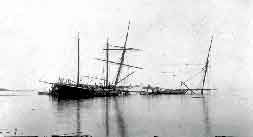 November 2, 1886 The Barnard Castle, a coal freighter en route from Nanaimo to San Francisco struck Rosedale Rocks on , but made it to nearby Bentinck Island where it now lies in 12 meters of water. See this image from the BC Archives. (Image A-0007)
November 2, 1886 The Barnard Castle, a coal freighter en route from Nanaimo to San Francisco struck Rosedale Rocks on , but made it to nearby Bentinck Island where it now lies in 12 meters of water. See this image from the BC Archives. (Image A-0007)
also this link:
The Wreck of the Idaho: Little is known about this wreck, but it is believed by the BC Underwater Archeological Society to be the designation of a wreck that lies off Rosedale reef. The pictures below by Jacques Marc, in the late 1990’s show the extensive evidence of this wreck.
-
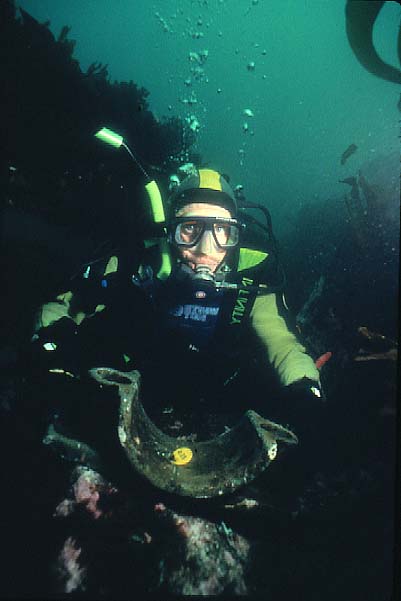
-
Diver with what looks like a bushing
-
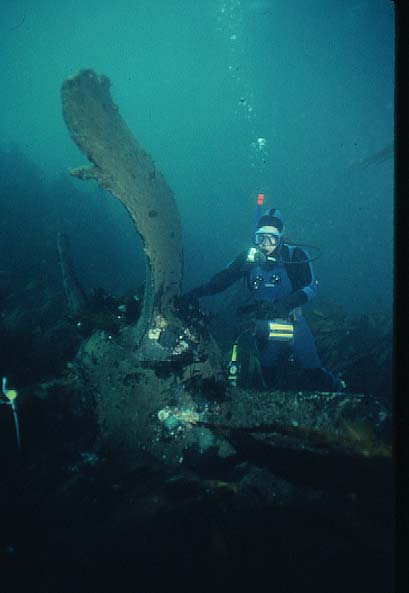
-
Diver with bent propellor.
-
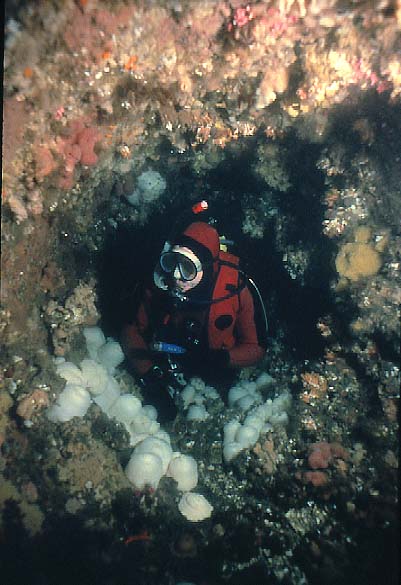
-
Hole lined with Marine Life.
-
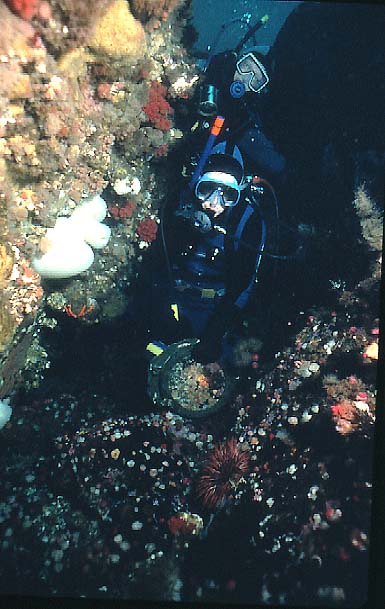
-
Diver with porthole.
-
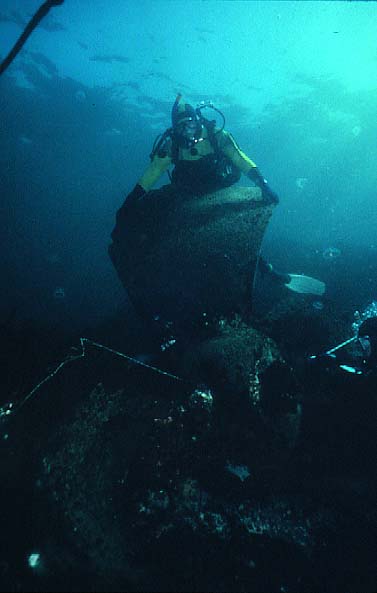
-
Diver with propellor.
-
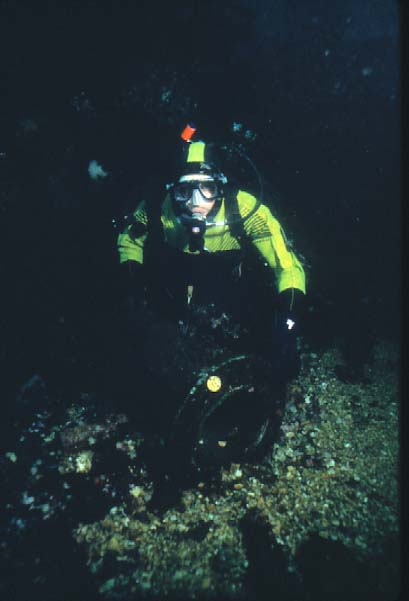
-
Diver with a wheel-like object
-
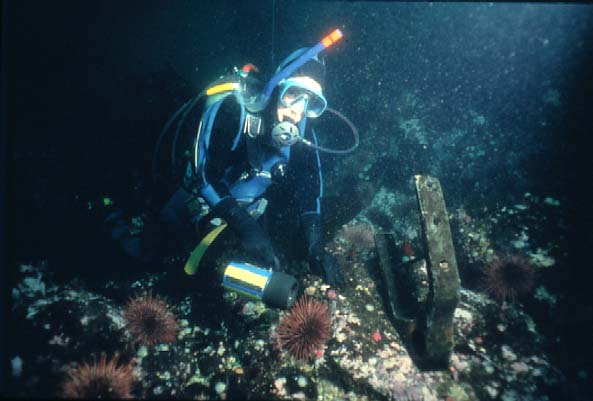
-
Diver with a light on an objec
-
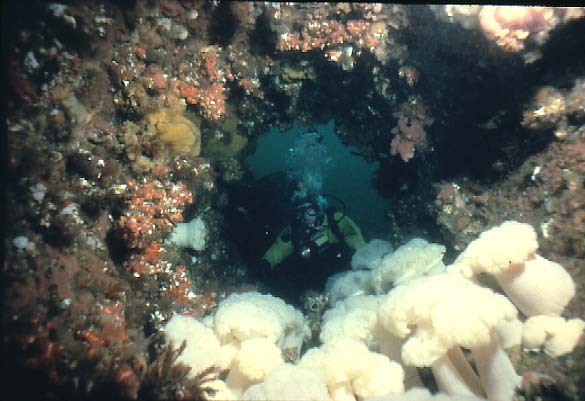
-
Diver in tunnel of wreck with Metridium Anemone
In 1892 the Department of Marine and Fisheries installed a steam plant and two compressed air fog horns at Race Rocks. The Department had taken over operation of lighthouses from the British Admiralty in 1871 when British Columbia joined the Dominion of Canada. Despite the addition of the powerful horns, tragedies continued at Race Rocks.
In 1896 the SS Tees crashed ashore,
followed by the Prince Victor in January 1901.
The worst disaster occurred on the dark night of March 24, 1911. The ferry Sech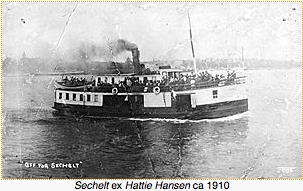 elt , bound for Sooke from Victoria found herself fighting a fierce westerly gale as she headed out the strait past Race Rocks. The captain decided against bucking the gale past Beechy Head and made the decision to make a fateful change of course to return his ship to the shelter of Victoria harbour. Caught in a beam sea the Sechelt capsized and sank rapidly taking her crew and 50 passengers with her to the bottom of Race Passage.
elt , bound for Sooke from Victoria found herself fighting a fierce westerly gale as she headed out the strait past Race Rocks. The captain decided against bucking the gale past Beechy Head and made the decision to make a fateful change of course to return his ship to the shelter of Victoria harbour. Caught in a beam sea the Sechelt capsized and sank rapidly taking her crew and 50 passengers with her to the bottom of Race Passage.
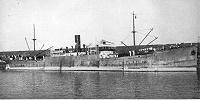 In July of 1923 the liner Siberian Prince went aground within a mile of the lighthouse without ever hearing the horn. Reports are that it was floated free.
In July of 1923 the liner Siberian Prince went aground within a mile of the lighthouse without ever hearing the horn. Reports are that it was floated free.
On November 2, 1925 the Holland America liner Eemdijk also ran aground in almost the same location. Again the ship’s crew reported they did not hear the fog horns from nearby Race Rocks.>The tug Hope was lost with her crew of seven while attempting to salvage the Eemdijk . In 1927 Race Rocks was the first station on Canada’s West Coast to be fitted with a radio beacon. This did a great deal to prevent further tragedy.
 And we still get shipwrecks at Race Rocks!
And we still get shipwrecks at Race Rocks!
